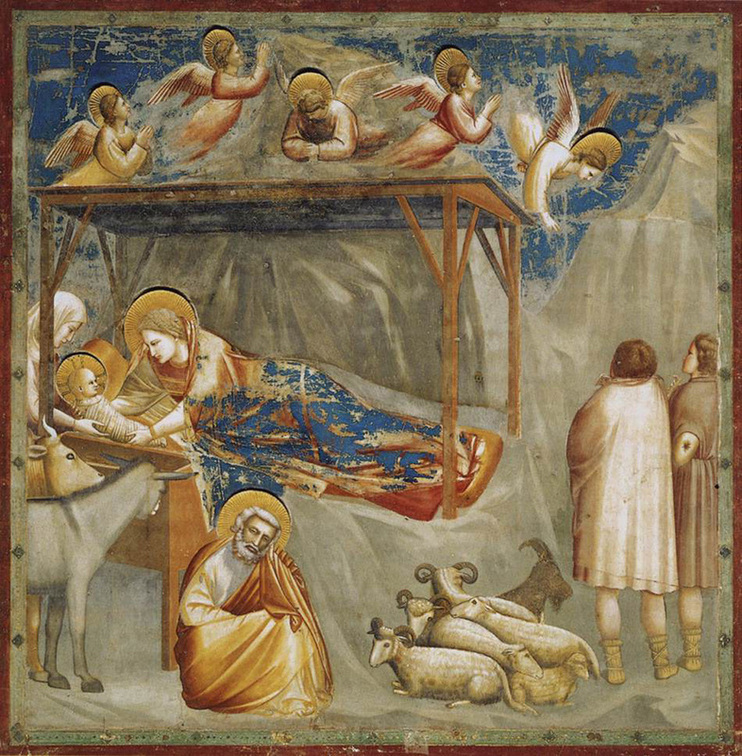
Proto-Renaissance? Early Renaissance? Whichever, he was the pioneer. He brings such a sweet humanity to his works. I'll write more later about him. Now, to bed. I feel as sleepy as Joseph appears to be in this painting from the Arena Chapel.
And now, it is later!
Giotto broke free from the severity of the Byzantine style, which had reigned for centuries as THE art of the Christian world. The figures in the Byzantine style are flat, stiff. . The divine seems remote, unapproachable. See, for example, this Nativity by an earlier 13th Century artist, Guido da Siena:
The differences may not be apparent to the casual viewer. Look more closely.

See at left this closeup of Guido da Siena's version of the Virgin and Child. While the ox and ass gaze at Him, she turns away from her newborn baby. These are stylized versions of the Mother and the Child. We might say almost cartoonish. We do not see a relationship happening here. They are disconnected, disengaged, remote from us and from each other.

Now, see a closeup of Mary and her baby by Giotto.
We still see aspects of the Byzantine style. But, Giotto does something entirely new. Giotto presents us with human beings.
How tenderly this mother places her baby in the manger, as the ox and ass look on. Mother and child make eye contact. They are related, connected. They are flesh and blood.
Giotto gives us, not the Virgin and Child, but Mary and her baby, Jesus. Guido's figures are cold, aloof; Giotto's warm, approachable.
Fast forward thru some centuries and hear the evangelical talk of a personal relationship with Jesus. Did Giotto plant the seed for that very idea? Now, there's a thought to ponder!

 RSS Feed
RSS Feed